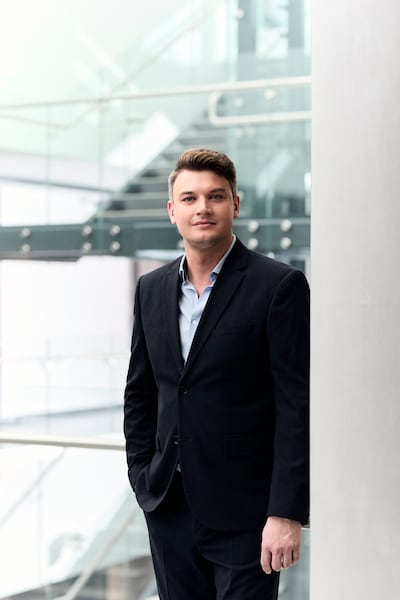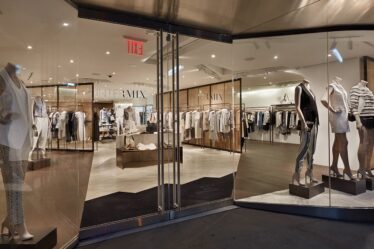
Polish makeup and skincare brand Inglot is entering a new phase of strategic growth. With plans to launch a new brand strategy next year — “the old new strategy” — and with a new CEO, Grzegorz Inglot, at the helm; Inglot is reinvigorating its image as it expands into new global markets.
A family business launched in 1983 by Polish entrepreneur and chemist Wojciech Inglot, the brand’s new positioning leans into its history, with a focus on science-based cosmetics. Indeed, Inglot was founded on the principle of solution-driven products centred around in-depth cosmetic research, an approach which is increasingly palatable to modern consumers.
As many as 65 percent of consumers are proficient skincare users, meaning that they use three to five products on a daily basis to address skin concerns, according to research by The Benchmarking Company. Consumers are also increasingly more informed in areas such as ingredients, with 53 percent of US beauty and personal care consumers researching beauty ingredients to understand product effectiveness, according to market intelligence and research agency Mintel.
Inglot’s specialised laboratories streamline research and product development, while 70 percent of their products include active ingredients. Their newly launched, skincare-focused face foundation prioritises a scientific approach to provide waterproof, medium-coverage while improving the skin’s microbiome. Communicating such expertise is increasingly expected — 67 percent of UK adults want beauty brands to provide more scientific validation, according to Dionne Officer, a research analyst at Mintel.
Inglot fosters a global clientele reaching across six continents, over 90 countries and more than 2000 retail spaces, while maintaining local production. Today, it hopes to leverage new product launches, a new store concept and an enriched in-store experience to connect with customers.
Now, BoF sits down with Inglot’s CEO, Grzegorz Inglot, to better understand how new leadership is informing strategy, brand communications and expansion into new markets.
What are the key objectives underpinning Inglot’s revised strategy?
The “old new strategy” is about communicating six core brand values. These include science-led and functional beauty, extensive colour systems, emphatic beauty — which relates to creating inclusive products that reflect the diversity of our customer base — sustainable considerations, and leveraging our heritage. We combine these values into our overall mission, which is to produce exceptional products and always maintain consumer trust.
The new slogan of the brand is “beauty inspired by science.” Through it, we hope to deepen our explanations of the active ingredients contained in Inglot products. We want to strategically communicate that our makeup products are multi-functional and skincare-infused.
Which markets is Inglot prioritising through its expansion?
Throughout the last 20 years, we have worked to expand internationally. Our priority is to strengthen our presence in the European markets because the sales models here are very well established. But with our new strategy, new markets are front of mind. Expanding our hold on the US and Asian markets are also a strategic priority because of their scale advantage — they are still the biggest markets in terms of beauty.
In terms of bright spots, the Middle Eastern markets present a compelling opportunity, with the highest growth potential in upcoming years. As we examine international growth, it’s a balancing act between existing hotspots and regions with the potential to grow.
We’re fortunate to already have a presence in many of these markets, so we are leveraging our own insights into local operations, trends, consumer needs as well as localised e-commerce and even duty-free channels.
How does your communication strategy differ across new markets?
Historically, and in most cases today, we work with a variety of partners who represent us on the ground in local markets. In many cases, they are very experienced in localised retail — and not only in the cosmetics category. The best example of that is Apparel Group, based in the UAE. We really appreciate the work they do with us because it brings unique insights which can help shape our distribution strategy in the region.
Manufacturing 95 percent of our assortment within our facilities here, in Poland, guarantees control over every stage of product development.
Communication is key, but the most important thing here is the product, because the range we have on offer has to differ across markets and regions. We always work on the basis that we will have 80 percent of our product range available globally, but the remaining 20 percent will be adjusted to suit the needs of that specific market. It’s the same with communications and any marketing and promotional materials — naturally, we always want to keep the brand messaging as consistent as possible, but we do appreciate we need to differentiate it somewhat to suit market need. Interestingly, we’ve found that we might even change the name of some products, depending on the market.
What impact does manufacturing locally have on product development?
Manufacturing 95 percent of our assortment within our facilities here in Poland guarantees control over every stage of product development. One real benefit is that we are able to focus on achieving the highest possible quality — which results in an almost zero percent returns rate.
Another benefit is being able to respond and react quickly to the needs of the market. For instance, we can be quick to action our white label offering for third parties — from development, through to product testing before heading to market. It even allows us to work more quickly on marketing activations. For instance, when it comes to influencer or celebrity collections and collaborations, we’re able to be very efficient, producing collections quickly. We have no need to outsource those processes, thus avoiding the typical delays and added complexities.
Which distribution channels are you prioritising for growth?
In the past, our business model was simple, but due to evolving markets, we’ve developed a hybrid model — it’s always about choosing the key sales channels for expansion. E-commerce will remain an important channel, as will travel and specialty retail spaces. We will also continue investing in and maintaining presence in multi-brand cosmetic stores. What is important to note here is that these three types of sales channels — e-commerce, travel and speciality retail — are projected to grow significantly year-over-year until 2027. E-commerce is expected to lead with annual growth rates of 12 percent and travel retail and specialty retail are expected to grow by at least 7 percent annually. We want to focus on those sales channels that could offer the best growth potential.
How are you innovating your physical store concepts?
For us, the new store concept was not only about creating a more comfortable shopping experience, but also creating a more inspiring, unique experience for customers. Our stores need to meet the demands and expectations of different age groups, and it’s not only a question of refurbishment or re-designing the space — we have to think about the customer journey, the visual merchandising and all the other facets needed to strengthen our relationships with this wide range of customers.
While 80 percent of our product range is available globally, the remaining 20 percent will be adjusted to suit the needs of that specific market.
We began by taking on board a great deal of feedback we received from our customers via various surveys we rolled out. It was this feedback that inspired the new shopping journey. The visual merchandising teams worked with it to present an entirely new approach to showcasing the product range, with more descriptions and more information on all the cosmetics and accessories presented in store.
What’s interesting about consumers today is that not all of them are interested in interacting with a sales advisor anymore — they are perhaps more reserved, or they don’t have the time to stop and discuss product at length. This encourages us to present everything in a way that allows the consumer to explore and forge their own journey. While we still keep the qualified makeup artists in store to help guide our customers, not everyone requires that level of service.
What further ambitions exist for Inglot over the medium term?
We are committed to continuing on a journey with our revised marketing strategy, which will be reflected in our products, our communication, our points of sale — in every touchpoint with the customer. My ambition and the ambition of my team is to showcase what we are most proud of to a wider audience. In the near term, one of our main goals is to find exceptional distributors who share similar values to Inglot.
This is a sponsored feature paid for by Inglot as part of a BoF partnership.



